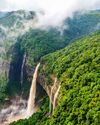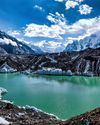
WHAT ARE RARE EARTH METALS?
The Periodic Table of Elements contains chemical information on over 118 different elements and their various properties that can be found on Earth today. Out of these 118 elements, 17 of them are known as rare-earth metals (REMs) or rare-earth elements (REEs). They were first given the name “rare earths” because it was originally thought that there was a short supply of these elements on Earth. These elements are typically dispersed and rarely found in concentrated amounts, but further studies have shown that there is in fact an abundance of these elements in many workable deposits around the world. These metals were only deemed rare, because they were often found in very small concentrations at a time, meaning ore deposits are not commonly economically exploitable. Ideally, for a rare earth metal ore to be economically viable, it should contain more than 5 percent rare earths. If they are mined along with another product, such as iron, this allows economic recovery when concentrations are as low as 0.5 percent by weight.
The existence of these rare metals did not come to light until the 18th century. Swedish army Lieutenant Carl Axel Arrhenius found a unique black mineral in a small quarry in Ytterby, did a small town near Stockholm. The mineral was found to be a mixture of rare earths, and in 1803, cerium (Ce) was the first individual element to be isolated. The first commercially produced rare-earth element was later mined in the 1880s in Sweden and Norway, before moving to foreign production in Brazil in 1887, and then India in 1911.
This story is from the AG 05/2020 144 edition of ASIAN Geographic.
Start your 7-day Magzter GOLD free trial to access thousands of curated premium stories, and 8,500+ magazines and newspapers.
Already a subscriber ? Sign In
This story is from the AG 05/2020 144 edition of ASIAN Geographic.
Start your 7-day Magzter GOLD free trial to access thousands of curated premium stories, and 8,500+ magazines and newspapers.
Already a subscriber? Sign In

Green Dreams
With its tea plantations and rice paddies, dense jungles and expansive forests, the region is well known as a green paradise. But many of the most impressive Asian landscapes have names you may never have heard of. Journey with us as we reveal just some of the incredible locations that make the rest of the world green with envy!

Life On The Edge
In the Chukotka Autonomous Okrug, in the remote northern Russian Far East, indigenous ethnic groups like the Chukchi and the Yupik live in the most extreme conditions, hunting seals in their traditional kayaks as they have for millennia

The Karakoram Anomaly Decoded
For decades, scientists have believed that glaciers in the Karakoram Range are defying the trend of those across the globe-resisting glacial melt due to human-induced global warming. But as we trek up the Karakoram's second-longest glacier in July, as the United Nations announces the world's hottest ever month on record, does the melting ice beneath our feet suggest the so-called Karakoram Anomaly is slowing? Or is there a ray of hope it will continue to delay the inevitable?

Green Water Revolution
Southeast Asia's Quest to Sustainable Wastewater Management in an Era of Climate Sensitivity

Green Philippines
The Philippine Archipelago may be synonymous with perfect beach holidays, but the Southeast Asian nation is also a great choice for your next ecotourism adventure

Why so Green?
From the Green Dome of the Prophet's Mosque in Medina to the fluorescent greens of flags and political campaigns, Islam has established itself as the world's \"green\" religion

Pilgrimage To Japan
The Land of the Rising Sun is as eclectic as it is fascinating, an exotic blend of ancient and modern. But two destinations in particular offer visitors an authentic taste of this unique nation: Wakayama, its spiritual centre, and Kyoto, its cultural heartland.

The Silk Road Through Uzbekistan
High-speed trains may ply some of this route today, but the historical, religious and cultural significance of the great cities of Samarkand, Bukhara and Khiva remains intact

10 Awe-Inspiring Reasons To Visit Sri Lanka
From eye-popping temples and tea estates to jaw-dropping national parks and natural wonders, the "teardrop island" has it all

Nepal: In The Shadow Of Giants
Sandwiched between China to the north and India to the south, Nepal receives influences from Asia's two major powers, but this unique land bordered by the greatest mountain range on Earth promises experiences offered nowhere else